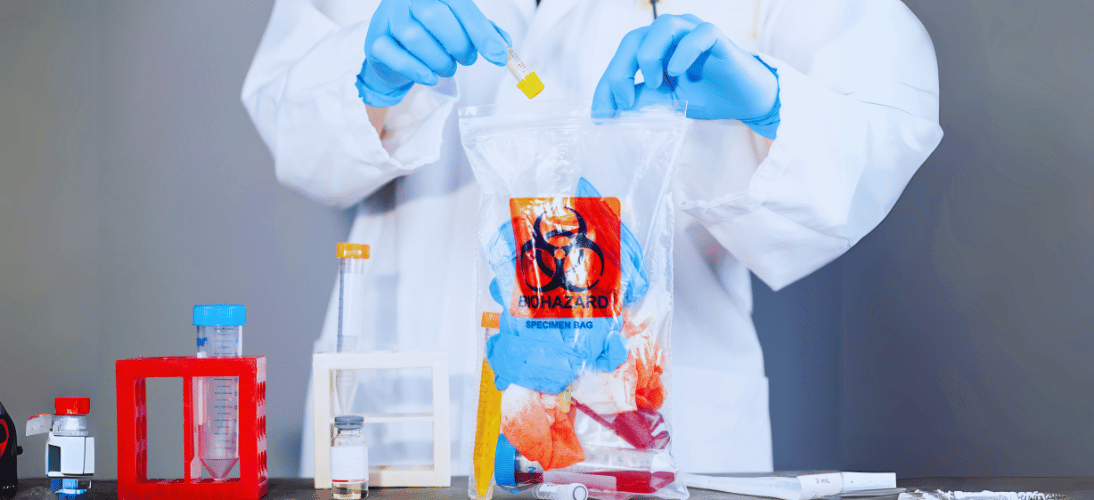Reducing Cross-Contamination: Proper Handling of Used Q Tips
Published by AllSwabs.com on May 15, 2024

Reducing Cross-Contamination: Proper Handling of Used Q Tips
Introduction
Cross-contamination in medical settings can lead to serious health risks, including the spread of infections and diseases.
One often overlooked source of cross-contamination is the improper handling of used Q tips, also known as cotton swabs. They can harbor harmful pathogens if not managed correctly.
This article delves into the risks of cross-contamination associated with used Q tips and provides best practices for their proper handling and disposal to ensure a safe medical environment.
Identifying Cross-Contamination Risks
Cross-contamination occurs when harmful microorganisms are unintentionally transferred from one object or person to another. Used Q tips can be a significant source of cross-contamination if they come into contact with multiple surfaces or individuals without proper decontamination. Common scenarios where cross-contamination occurs include:
- Improper Disposal: Disposing of used Q tips in regular trash bins rather than designated biohazard containers.
- Lack of PPE: Failing to wear medical gloves or other protective equipment when handling used Q tips.
- Inadequate Cleaning: Reusing contaminated surfaces or instruments without thorough cleaning and sterilization.
Best Practices for Handling Used Q Tips
To minimize the risk of cross-contamination, it is essential to adopt best practices for handling used Q tips. These guidelines include:
- Immediate Disposal: Dispose of used Q tips immediately after use in designated biohazard containers. Avoid placing them on surfaces or carrying them around.
- Use of PPE: Always wear gloves and other appropriate personal protective equipment (PPE) when handling used Q tips. This reduces the risk of direct contact with contaminants.
- Single-Use Policy: Treat Q tips as single-use items. Never reuse a Q tip, even if it appears clean.
Proper Disposal Techniques
Proper disposal of used Q tips is critical in preventing cross-contamination. Follow these disposal techniques to ensure safety:
- Biohazard Containers: Place used Q tips in biohazard containers that are puncture-resistant and leak-proof. These containers should be clearly labeled to indicate biohazardous material.
- Segregation of Waste: Ensure that biohazardous waste, including used Q tips, is separated from regular waste. This prevents accidental contamination.
- Regular Disposal: Dispose of biohazard containers regularly and in accordance with local regulations. Do not allow containers to overflow or remain in patient care areas for extended periods.
Staff Training and Compliance
Training medical staff on proper handling and disposal procedures is crucial for reducing cross-contamination. Implement the following strategies to ensure compliance:
- Regular Training Sessions: Conduct regular training sessions for all staff members on the importance of proper handling and disposal of used Q tips.
- Standard Operating Procedures (SOPs): Develop and disseminate SOPs that detail the correct procedures for handling and disposing of used Q tips.
- Monitoring and Feedback: Establish a system for monitoring compliance with handling and disposal protocols. Provide feedback and corrective actions when necessary.
Monitoring and Evaluation
Continuous monitoring and evaluation of handling and disposal practices are essential to maintain a safe medical environment. Implement the following measures:
- Regular Audits: Conduct regular audits of waste management practices to identify areas for improvement.
- Feedback Mechanisms: Create channels for staff to report issues or suggest improvements related to handling and disposal practices.
- Continuous Improvement: Use audit results and feedback to update and enhance protocols, ensuring they remain effective and up-to-date.
Conclusion
Reducing cross-contamination through proper handling and disposal of used Q tips is vital for maintaining a safe and hygienic medical environment. By following best practices, ensuring staff training and compliance, and continuously monitoring procedures, healthcare facilities can significantly minimize the risks associated with cross-contamination. This proactive approach protects both healthcare workers and patients, contributing to overall public health and safety.
Related Categories

